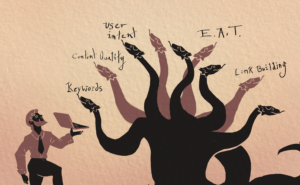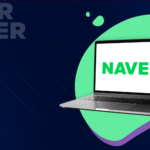Google Insights released a list of 10 popular digital marketing topics in South Korea for 2025. Some of these topics have big implications for digital marketing targeting South Koreans, and honestly digital marketing in general. For your convenience, I’ve condensed down the list to three topics that I think are of most interest.
The Loyalty Reset, Consumer Confidence, AI, and You
The Loyalty Reset: Opportunity or Catastrophe?
We are currently at a watershed moment, where consumer behaviors are changing dramatically and quickly. According to Google Insights, South Korea is experiencing a “Loyalty Reset” in terms of how they buy things and where. No longer are Koreans sticking to a few tried and true sales channels, but are experimenting with new vendors and ways to buy things. For some retailers, this could be the perfect time to penetrate the market, while others will likely lose market share. How your company navigates this period will likely determine its long-term success in the country.
Discover the Apac Travel Trends for 2025
Confidence Gap: What is it and how to bridge it
A large part of this Loyalty Reset has been a decline in consumer confidence. Following the Covid-19 pandemic, many have felt uncertain about the future of the economy, leading to anxiety around spending (McKinsey). The increase of information about products have also been a double-edged sword: whilst your brand is more likely to be seen by consumers, they are also more likely to see your competitors, and several blogs, influencers and columnists telling them which brands are the best, what to look out for, what they need/don’t need, etc. This can be extremely overwhelming to a consumer, and make it hard to feel confident in any purchase decision they make. Afterall nobody wants to be the person who caves and buys a trendy new product just for a cheaper dupe to suddenly start trending or to then be told that a product is bad for you actually (beauty industry I’m looking at you). Especially when parting with one’s discretionary income is becoming increasingly painful. However, as consumers lose trust with brands they once relied on, they are now increasingly open to but anxious about experimenting with new products and brands.
So how can you as a business navigate what Google has dubbed the “Confidence Gap”, and make consumers confident about purchasing from you?

Well, one of the most important things to consider when trying to establish trust in your brand (and hopefully eventually loyalty) is the consumer experience. The better the design of the product or service meets the individual’s specific needs and preferences, and is able to respond to feedback the more satisfied the consumer will be. Moreover, Korean Influencers are deemed as KOL (Key Opinion Leaders), which means that they are able to dominate the public perception of your product/service and sway it in a positive light. This translated into brand trust, which becomes brand loyalty.
Read this article so you, as a business, understand this strategy better.
Experience is Everything
In the past, it was difficult to curate a highly personalized and responsive experience; however, with the rise of AI technology, this is becoming more feasible for marketers. AI tools are able to sift through more data on consumer behavior and preferences, and much faster, allowing for a much more comprehensive understanding of individual consumers. Then AI algorithms can use that information to shape what content and recommendations that consumer sees. This helps to improve the consumer’s experience. For example, a 15 year old girl with an emo aesthetic, and a 43 year old working mom are likely looking for different things when they search “black a-line sundress” on Amazon. Ideally the recommendations they receive from that search term will also take into consideration past purchase and search behavior, and will recommend items that more closely align with their usual tastes.
Utilizing AI to make the buying journey more comfortable, and to reduce some of the noise by tailoring what the consumer sees can help you and your company bridge that Confidence Gap, and take advantage of the Loyalty Reset.
AI and SEO
AI, aka the digital marketer’s’ new best friend and worst enemy. As mentioned in the previous section, effectively utilizing AI Marketing in Korea can have a major impact on whether or not a consumer wants to continue buying from your business, but it can also impact whether they find out about it at all.
Search Engine Algorithms: The Beast with Many Heads
Search engine algorithms are like hydras; attempts to conquer them are seemingly endless and often frustrating. As soon as you figure out one factor, two new ones emerge and take its place.

The amount of variables to consider boggles the mind, and they can change so fast that once you manage to figure them out through reverse engineering, that information is already outdated. Human beings just simply are not meant to process as much data in as short an amount of time as the AI that search engines like Google use to develop their algorithms.
Algorithms which are meant to predict and respond to something even more complicated and frustrating to understand: the wants and needs of the average consumer. Especially as the ways users interact with and use search engines evolves and changes. For example, more and more people are using voice search options. A study found that the way users structure their queries, and even their expectations for the results change depending on whether they typed the question or used voice search. The same search engine needs to be able to process someone typing “gluten-free cupcakes Seoul” and someone asking “Hey Google, where can I buy gluten-free cupcakes in Seoul?”, understand that both mean the same thing, but that the first user will more likely want a top 10 list of gluten-free bakeries in Seoul while the second likely just wants to be linked directly to the directions to the nearest place with gluten-free cupcakes.
So SEO is complicated, because search engines are complicated, because people are complicated – what is a marketer to do about it? Fight fire with fire of course.
AI vs. AI and other Sci-Fi Plots
As previously mentioned, search engines like Google use AI to determine things like page ranking. Afterall, in the case of Google, there are over 200 factors that can determine how your webpage fares in the algorithm, any of which could change in response to changes to user behavior, improvements in technology, etc.
As such, a marketer’s best hope at keeping up is to create a similar AI network, which also constantly adapts and evolves with new information. The time saved on analyzing the data for SEO trends and keywords, helps ensure the information is more timely, but also frees up your human marketers to focus more on complex tasks that require more thinking and creative problem solving, rather than plugging away numbers. This helps save you time and money, and deliver better results. AI marketing in Korea is going to be the path to success in the country in the future, and it has already started – read more about AI in South Korea.
Long or Short? That is the question
It’s a well known fact that short-form content has been on the rise the past few years, and of course South Korea – a country with one of the highest levels of social media penetration in the world – is in on the trend.
In one survey, half of Korean office workers in their 20s and 30.8% of office workers in their 30s responded that they’re addicted to short-form content (Korea Herald). So many of the young professionals of Korea are watching short-form videos, but surprisingly TikToks are not making up the majority of their watch time (though it is quite popular in other parts of the APAC region), despite the brand name being almost unanimous with the format in other parts of the world. The most popular platform for watching short-form content in South Korea is actually Youtube Shorts, followed by Instagram Reels (Korea Herald).

So should you focus your attention away from long-form content and focus on short-form content? Not exactly. While short-form content is on the rise, viewers are also just watching more content, more places, more of the time. Consumers are increasingly watching a mix of different lengths of content, across different devices. For example, many Gen-Z students might relate to the experience of having a lofi study stream on your computer while you’re studying, but getting distracted from your homework by a Reel your friend sent you.
The most successful YouTubers understand that most people use both, and utilize a complementary strategy of short and long content. 59% of Gen-Zers say they use short-form content to help them find and decide on what long-form content to watch (Google). Short-form content can be a way to attract and encourage users to interact with your longer-form content, increasing your overall reach.
Long and short-form content are also consumed in different ways and accomplish different things. Short-form content is most often watched on vertical screens like your phone, and are by their very nature, quick and to the point. Short-form content usually has more of an emotional appeal, either making you laugh, cry, get angry, etc. It’s content that you usually watch while waiting or between other tasks, designed to produce as much of a reaction as possible in a short amount of time. Also due to the short and often less polished quality of this content, it is typically low-stakes for both the content creator and the viewer. As neither are sacrificing much time or effort. However, that ease of viewing and producing is a double edged sword for marketers. Viewers are watching more content and are less selective about what they watch, so they are more likely to watch your video, but they also are going to see a lot of different videos, and there are lots of new videos being produced all the time, meaning it may be easy to get lost in the noise
Viewers tend to consume long-form content when they are interested in a topic or concept, and want a longer, more in-depth video about it. Increasingly viewers are watching these types of videos at home on the TV. Think of someone sitting on their couch, looking for something to watch while eating. Viewers are going to be more selective, and it’s harder to get recommended by the algorithm with longer videos, so it will be harder to get your content in front of a lot of eyes. However; the viewers you do get are more likely to be interested in whatever you are talking about, and are going to be more invested when watching.
Oh, Where in the World Will You Go?: How the Internet and Loyalty Reset are Affecting Travel
South Koreans are well-known in the travel industry for having well and tightly planned vacations. With limited time off work, the traditional mindset has been to do as much as possible in as short a time as possible. To facilitate this, Koreans have traditionally opted for travel packages with a set itinerary of planned activities. However, with the rise of convenient online booking and changing mindsets regarding travel, this is starting to change.
Increasingly South Korean travelers are more likely to change their plans last minute, meaning that just because you have a certain number of reservations booked in advance, does not mean that you are guaranteed those customers. This is keeping with the global travel trend of travelers making fewer and fewer reservations ahead of time, and increasingly having less strictly planned out vacations. But why is this change occurring?
First-off is a change in mindset– Koreans still value their vacation time, but what constitutes making the most of it has changed. Instead of a focus on doing as much as possible, the focus has shifted to getting as relaxing and as high quality of an experience as possible. Preferences in destination are also shifting to less busy, more scenic natural sites that are closer to home. A large part of this trend is admittedly the after effects of Covid-19. The past few years, Koreans have been preferring in-bound travel to less crowded places because of concerns of infection.
There is also the rise of solo travel among Koreans. Koreans are also increasingly living alone, and thus traveling alone (Sustainability), as opposed to before where they would often travel in groups. As a byproduct, Koreans are increasingly looking at travel, and other consumer areas, through a more individualistic lens. Solo-travelers have more flexibility as they do not have to coordinate with other people, but also travel serves to fulfill their individual wants and needs. This makes it easier for travelers to make spur of the moment decisions depending on their whims.
The second reason is the way Koreans are making travel reservations. Most Koreans now use travel apps to make reservations and bookings, and use social media and internet sources to research where they’re staying and prices (US International Trade Administration). Booking online instead of through a travel agency allows travelers more freedom and autonomy in making their travel choices, but also makes it easier to cancel and change bookings. The greater availability of information provided by the internet also likely triggers the previously discussed confidence gap phenomenon. When making travel decisions, one is constantly seeing different things one can do on social media, changes in prices at different accommodations or activities, etc. With so much information out there, it is hard to feel confident that you have made the right choices, especially when you are using the finite resources of time and money. It is not hard to imagine someone changing their mind a few times, as they do more research and mull over the information.
These trends in Koreans’ travel behavior is of note not only because of the opportunities that the Korean travel market poses (US International Trade Administration):
- Outbound tourism was on the rise before the pandemic and is likely to rebound in the future
- In 2019, Korean visitors to the U.S. spent on average $5,900
But also because of the implications that the forces behind these trends might have on other industries. The rise in single-person households in South Korea, the rise of using apps or sites to make major purchasing decisions, and the aftermath of the Covid-19 pandemic on consumer preferences all are likely to affect other areas of consumption, so it might behoove marketers to observe what is currently happening in the travel sector and how that might affect their industry.





